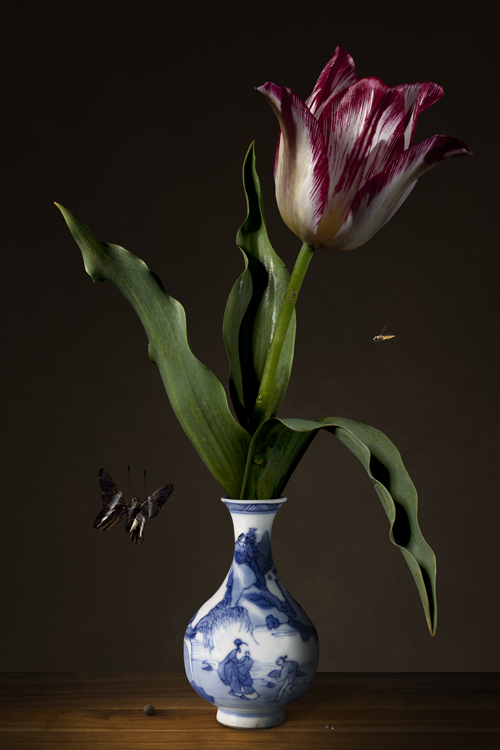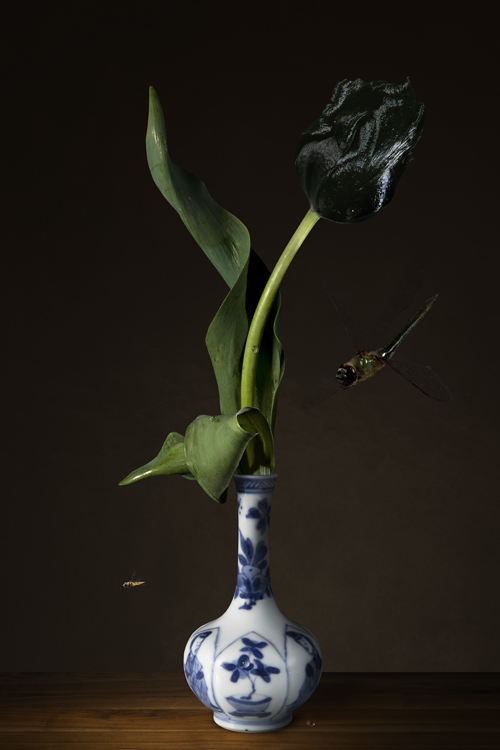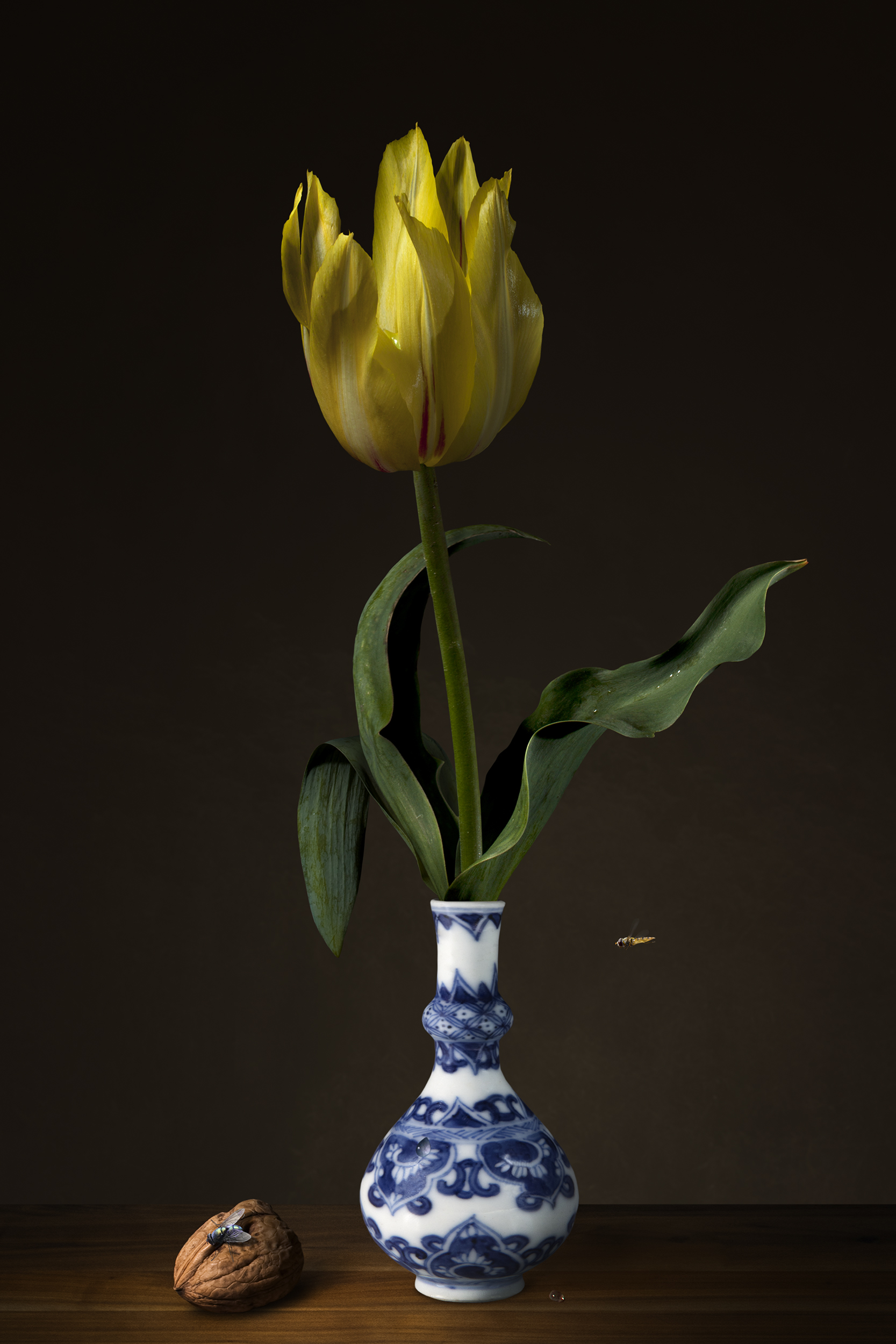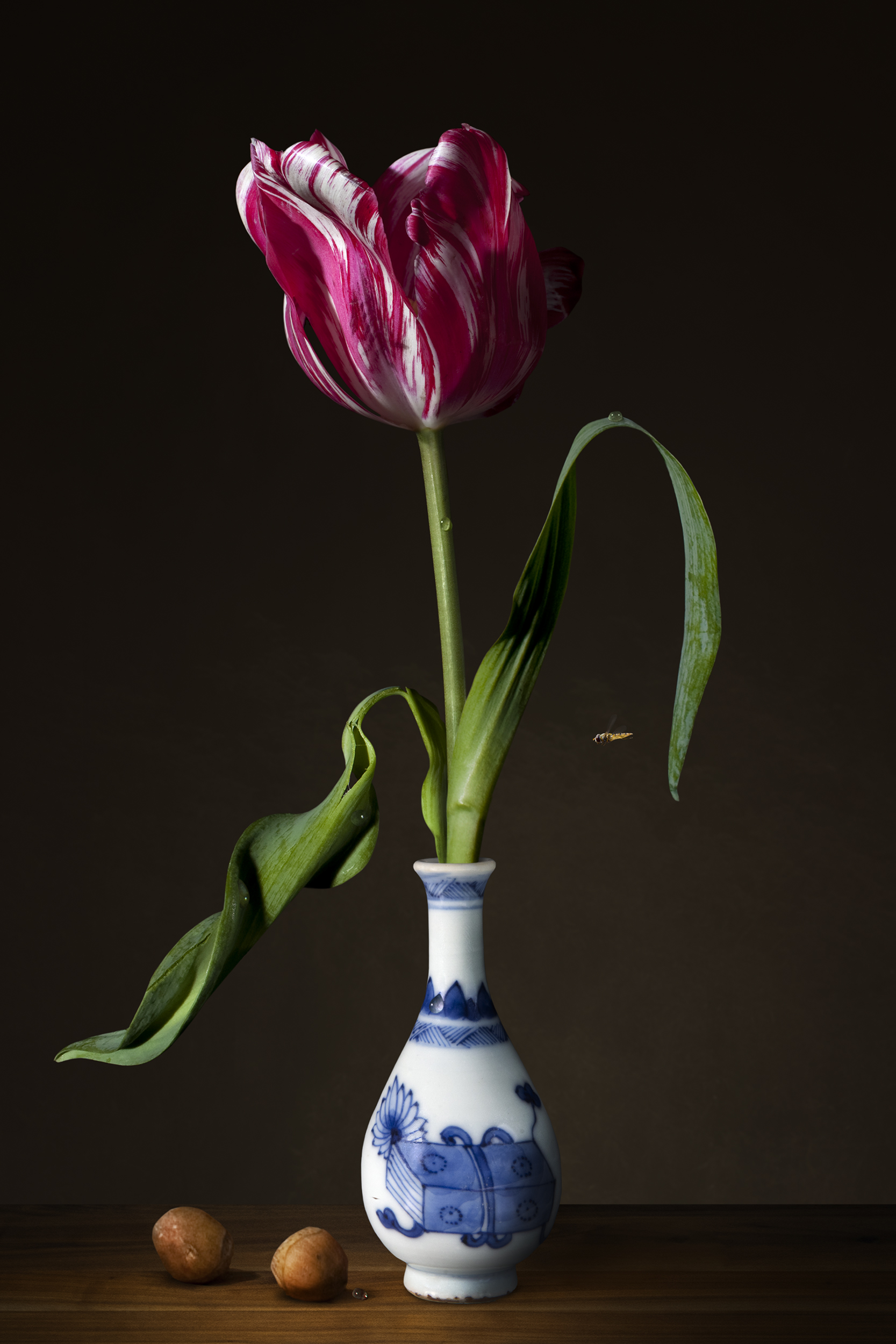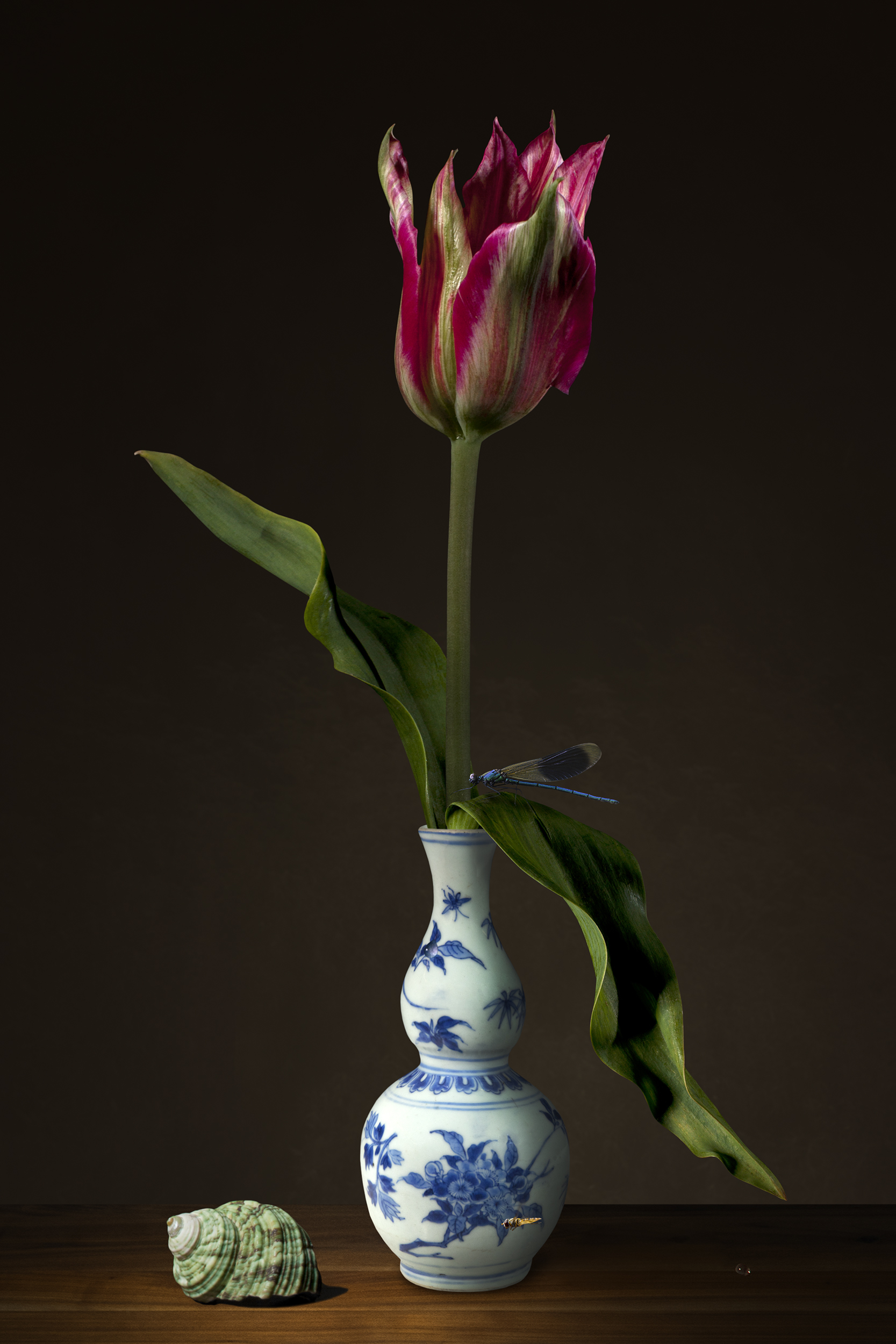TULIP BOOK
Portrait of a tulip
Bas Meeuws’ beautiful Tulip Book series has its roots in the Dutch tulip books and individual tulip flower studies of the seventeenth century. These magnificent flower pieces connect back to the history of botanical science and illustration, the economic development of the Netherlands and the typical Dutch genre of the flowerpiece.
The introduction of the tulip into the Netherlands coincides with the arrival of Carolus Clusius (1526–1609) as first director of the Hortus botanicus in Leiden. Clusius’s rather large collection of tulips was the result of his work supervising the royal garden of Maximillian II in Vienna as well as his contacts within the Turkish trade sector. Fortuitously, the peaty soils just behind the Dutch coastline and dune systems were highly suited to growing these bulbs. At the beginning of the seventeenth century, there were already many tulip cultivars exhibiting different colours, double-flowered forms, and petals bearing fringes or even flame-like streaks. Unknown to the growers at the time, the highly prized flame-like patterns on the petals are caused by a special tulip mosaic virus. Tulip bulbs became a highly popular and precious commodity.
Today tulips are still one of our most prominent national products and have become the symbol of the Netherlands. The seventeenth-century way of depicting tulips, first rendering each flower individually in as natural and detailed a way as possible and later compiling them flower by flower into a bouquet or composition, is now the most characteristic feature of the masterly working method of Bas Meeuws.
Dr. Renske Ek, Conservator Tuinen Paleis Het Loo


